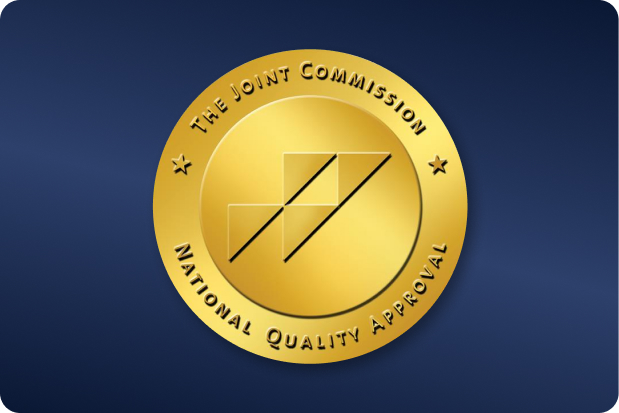 OUR LOCATIONS
Call to book 201.523.9590
OUR LOCATIONS
Call to book 201.523.9590
 OUR LOCATIONS
Call to book 201.523.9590
OUR LOCATIONS
Call to book 201.523.9590

Your muscles experience an enormous amount of strain from day-to-day activities. While your body can withstand a certain amount of wear and tear every day, it can’t cover everything that you do. Depending on the lifestyle and the activities you pursue, your body is more likely to develop a condition where too much stretching causes it to form into a knot.
So what are “knots”, and why do we find them frequently in the lower back? Muscle knots (or myofascial trigger points) are muscle fibers that stick to each other instead of remaining flexible, which causes them to contract and tighten into lumps. These knots can form anywhere but are most common around your lower back.
When your body develops muscle knots, it’s usually a sign that a specific muscle group has been stressed so much that it transforms into a trigger point. These hard yet sensitive knots can be painful and uncomfortable to the touch, even if you aren’t doing anything.
Here are the basic characteristics you need to understand about muscle knots:
Muscle knots are characterized by a tense, tightly contracted, and sometimes painful group of muscles right underneath the skin. While they can form anywhere in the body, you would usually find them around the lower left back, because of all the weight we place on that area during the day.
Other symptoms of trigger points include an inability to move the limb or touch the area without pain, numbness, swelling, inflammation, and visible or barely visible nodules beneath the skin. The severity of these issues will vary from patient to patient. Some only experience acute pain in the lower left of the back, with some combination of shoulder or neck pain. Other patients may experience chronic pain in several locations around their back.
Three issues usually manifest in knotted muscles:
Muscle knots are caused when the muscle group is strained beyond its usual self-repairing mechanisms, so the body orders it to contract and tighten to avoid any further injury. The knot usually remains until an outside force breaks up the knotted tissue and reduces the inflammation.
These knots can also be caused by dehydration, poor diet, or stress. These factors can also worsen any pre-existing muscle knots, making them more difficult to treat.
While most patients may dismiss muscle knots as a nuisance, they can cause chronic pain if left untreated. They can also negatively affect the quality of life for most patients, as the pain from the contracted muscles can be triggered by activity or bodily contact. This is even more painful for people who’ve experienced injuries.
Most muscle knots go away after cursory treatment and can be kept away by paying close attention to your body’s tissue. However, patients should seek immediate medical treatment if their muscle knots don’t go away after rest, persist after being treated, or multiply exponentially.
One reason for this is that muscle knots can be easily confused with swollen lymph nodes, which are the earliest indicators of infection in the body. Swollen lymph nodes cannot be treated with the treatment options normally reserved for muscle knots, as they will only subside once the infection in the body has been fought off.
You should also consult your doctor if your muscle knots suddenly become painful and extremely tender to the touch. Excess swelling or inflammation of muscle knots can be a sign that a nerve cluster in the area is being pinched, and often manifests in acute back pain.
Depending on the severity of the muscle knots, there are several ways that they can be treated:
In most cases, adequate bed rest is enough to cause the muscle group to relax and recover. This approach also helps reduce the amount of inflammation and swelling that caused the knots to form. Depending on the severity of the cause, doctors may usually prescribe anywhere from one day up to a week of bed rest.
Alternatively, patients may also try to stretch and exercise regularly to prevent the body from becoming too sedentary. Lengthening and circulating muscle groups via motion is one of the best ways to prevent them from contracting and freezing up.
Applying heat or cold can help loosen muscles to where you can push on the knots to loosen them. This approach is particularly effective for knots caused by doing professional sports, heavy lifting, and other strenuous activities.
Chiropractic massages, foam rollers, and trigger point balls are all excellent management therapies for the pain that comes with muscle knots. Aside from an effective, low-cost option, these treatments are suitable for everyday knots that may not require a doctor visit to resolve. Most patients usually report some relief after a deep massage, though several massage sessions may be required for older patients or people with injuries.
For more serious cases, physicians may prescribe several sessions of physical therapy to treat dense muscle knots. These treatment options don’t always revolve around removing knots: you may also get advice and routines to follow to prevent them from forming in the future.
If you suspect that your muscle knots are too many to deal with on your own, consult your doctor immediately. Any attempts at home medication or treatment without the approval of a medical professional can aggravate your condition and may cause further complications.
If you frequently experience knots in your lower back, it could be a sign that you need to change your lifestyle. While having knots isn’t debilitating or life-threatening, they are the earliest signs of potentially more serious conditions that can affect your health and well-being in the future. Consulting a doctor about frequent knots in your back is an excellent way to prevent spinal issues.
At The Spine And Rehab Group, we believe in offering comprehensive, long-term solutions to spinal and lower back issues for all our patients. With years of experience in the city of New York, our staff is well-trained and highly motivated to provide innovative treatments to any kind of spinal issue. To get help with your own back pain, contact one of our clinics today to set up a consultation.
Learn more: Can Constipation Cause Lower Back Pain?



